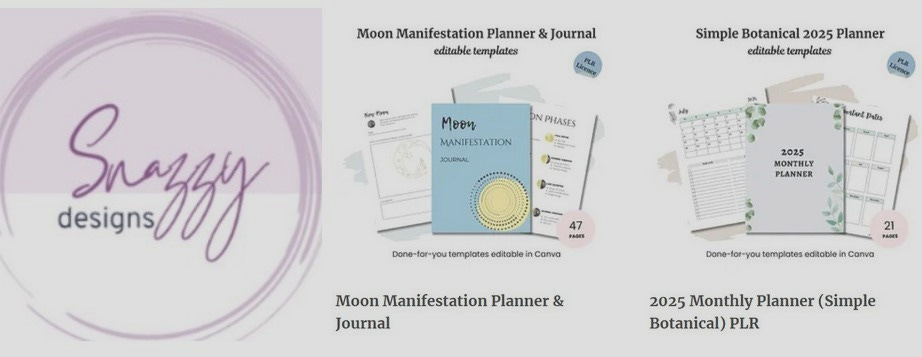Life First~
Sometimes life can be random. I awoke Friday dawn to my dogs alerting me to a
6-week old foundling kitten in the garden. What followed was a week of community collaborations, mostly on FB: searching for remaining siblings, finding homes, and identifying the young woman who left them; offering to help fundraise for spaying to prevent future abandonment (this was the second litter int eh past year!).
These adventures in problem-solving and community engagement remind me of my professional development action plan. Structured goal orientation. I needed to assess and plan, engage stakeholders, scope for resources, consider ethical issues, and evaluate the process and outcomes post-adventure.
So… here is my assessment piece as a worked example of a professional action plan; you may find yourself writing one for a psychology assessment.
BTW, after bamboozling the household with her antics for 3 days; kitty is now in Cairns with a family and a 9-wk old companion kitten]).
Plan Introduction
Curriculum design involves navigating enabling and constraining factors (Heinert & Galindo-Gonzalez, 2016), using evidence based practices to evaluate teaching practice, and developing a continuing professional development plan. Following, are the details of the practice architecture for my facilitation and evaluation of the “Statistics 101” redesign.
Analysis of Practice Sites & Conditions
Using force field analysis (Heinert & Galindo-Gonzalez, 2016) enabling and constraining factors in the blended classroom context can be determined:
Enabling Conditions. Using a learning management system to to facilitate online delivery of readings, online versions of learning activities, online tutorial options, and lectures (using enhanced technological design where available for universal design for learning, e.g., Luckin, 2018).
Technology-enhanced learning resources (e.g., Padlet, PebblePad, screen readers, captions, and speech-to-text software) can enhance accessibility and learning outcomes for students.
My curriculum redesign focuses on student understanding of content and assessment, and relevancy to career aspirations. My aim is to aid their development of essential research competencies required of a professional in their field (e.g., Department of Education, Skills & Employment, 2020).
The updated course structure I provide (Nota bene. Will be the content of an upcoming post) supports student learning with hands-on, interactive, and iterative practice and feedback (Sweller, 1988).
Further, my curriculum design is influenced by ethical and legal frameworks, industry needs, and disciplinary pathways (Goodyear et al. 2021).
I am taking advantage of the suite of opportunities for professional development as an educator to higher education students (e.g., free and paid micro-credentials, workshop and forum attendance). This enables my continuous growth as an educator in the tertiary sector, as well as providing career advancement opportunities. Also, this allows for my engaging with ‘critical friends’; colleagues who can peer-review my work and provide developmental feedback.
Constraining Conditions. Students often lack prior research and or statistics knowledge. Further, they tend to not appreciate the value of such skills for future employment. These factors can increase a student’s cognitive load during learning.
Also, many students are task-oriented and may struggle with abstract concepts. And some students may come from cultures where critical reflection is not valued.
It may be that a delivery model using more tailored tutorials and learning activities can enhance student engagement with the curriculum.
Facilitation Action Plan
Goals
- Cultivate an inclusive learning environment to support all students via tailored-as-possible learning activities (e.g., based on personal interests, career aspirations, and viewpoint diversity).
- Develop students’ classical critical thinking, reasoning, argumentation, and civic discussion skills.
- Assist students to make relevant the learning material, to their emerging professional practices.
- Reduce cognitive load through small, interactive, iterative, and relevant-to-the-student steps.
Tasks
- Scaffolding (Handayanto et al., 2024; Vygotsky, 1978): Progress from concrete examples to abstract concepts, using real-world activities (e.g., case studies), whilst providing clear links to intended learning outcomes.
- Interactive Learning (Taylor & Bovill, 2018; Vervaeke et al., 2017): Encourage collaborative dialogues tutorials and discussion boards to deepen learning through partnership-based learning.
- Transparent Assessment (Ambrose et al., 2017): Make assessment criteria clear
(e.g., rubric discussions, and applied to exemplars), and use formative and summative assessments.
Timeline of the Redesigned Curriculum
- Pre-semester: Finalise modules, set up discussion boards and technology; initiate reflective journal for in and on actions (Gibbs; 1988; Keen, 2006; Schön, 1983).
- Weeks 1-2: Build rapport and introduce the curriculum.
- Weeks 3-6: Introduce core concepts with peer learning and formative feedback.
- Weeks 7-10: Provide support for the Research Proposal Draft.
- Weeks 11-13: Support final Research Proposal and reflective learning journal
- Seek Peer-Review and complete personal reflective journaling for the semester.
Resources
As per identified Enabling factors.
Milestones
- Successful pre-semester preparation (i.e., task checklist completed).
- Positive engagement in the first two weeks (i.e., ≥ 50% complete reflective assessment 1; participate in discussion boards; and or contribute in the online tutorials).
- On-time submissions for the Research Proposal Draft (with ≥ 50% achieving a high C grade).
- Successful completion of final Research Proposal (with ≥ 75% achieving a high C grade; and ≥ 85% completing the final reflective assessment).
Evaluation Action Plan
My evaluation focus for my curriculum redesign, is its effectiveness to meet goals and milestones.
Data Collection
- Formative: Reflective assessments, and ongoing feedback from students through discussion boards, weekly activities, email, and the final student satisfaction survey (quantitative and qualitative).
- Summative: Student demonstrated understanding and application in assessments (quantitative and qualitative).
- Peer Review: Engage in professional networks and collaborations for feedback (quantitative and qualitative).
Data Analysis
- Use SPSS and NVivo to organise, code, or analyse assessment and feedback data, to determine how well students have met the learning outcomes and engaged with the learning process (e.g., Kopelowitz, 2013; Liaqat, 2018).
Light & Life~
Charmayne
I’m affiliated with Snazzy Design because of her quality digital journal and planner template, that could aid your semester organisation and learning experience.
References
Ambrose, S. A., Bridges, M. W., DiPietro, M., Lovett, M. C, & Norman, M. K. (2017). How learning works: 7 research-based principles for smart teaching. John Wiley & Sons.
Department of Education, Skills & Employment. (2020). National priorities and industry linkage fund: Final report. https://www.education.gov.au/download/11047/npilf-final- report/21154/document/pdf
Gibbs, G. (1988). Learning by doing: A guide to teaching and learning methods. Further Education Unit.
Goodyear, P., Carvalho, L., & Yeoman, P. (2021). Activity-centred analysis and design (ACAD): Core purposes, distinctive qualities and current developments. Educational Technology Research and Development, 69, 445–464. https://doi.org/10.1007/s11423- 020-09926-7
Handayanto, K., Fawaiz, S., & Taufiq, A. (2024). Using e-scaffolding to develop students’ scientific reasoning through inquiry-based learning. Obrazovanie i nauka = The Education and Science Journal, 26(3), 69–90. https://doi.org/10.17853/1994-5639- 2024-3082
Heinert, S., & Galindo-Gonzalez, S. (2016). Making decisions using force field analysis. EDIS. https://doi.org/10.32473/edis-wc224-2015.
Keen, I. (2006). Ancestors, magic, and exchange in Yolngu doctrines: Extensions of the person in time and space. Journal of the Royal Anthropological Institute (N.S.)12, 515- 530. http://doi.org/10.1111/j.1467-9655.2006.00350.x
Kopelowitz, E. (2013). Assessing outcomes in Israel education. https://www.casje.org/resources/israel-education-brief-assessing-outcomes Luckin, R. (2018). Enhancing learning and teaching with technology: What the research says. UCL IOE Press.
Luckin, R. (2018). Enhancing learning and teaching with technology: What the research says. UCL IOE Press.
Liaqat, A. (2018). The design of curriculum, assessment and evaluation in higher education with constructive alignment. Journal of Education and e-Learning Research, 5(1), 72-78, http://doi.org/ 10.20448/journal.509.2018.51.72.78
Schön, D. A. (1983). The reflective practitioner: How professionals think in action. Routledge.
Sweller, J. (1988). Cognitive load during problem solving: Effects on learning. Cognitive Science, 12(2), 257-285. http://dx.doi.org/10.1207/s15516709cog1202_4
Taylor, C. A., & Bovill, C. (2018). Towards an ecology of participation: Process philosophy and co-creation of higher education curricula. European Educational Research Journal, 17(1), 112-128. https://doi.org/10.1177/1474904117704102
Vervaeke, J., Ferraro, L., & Colangelo, J. (2017). Relevance, meaning, and the cognitive science of wisdom. In The scientific study of personal wisdom: From contemplative traditions to neuroscience (pp. 21–51). Springer. https://doi.org/10.1007/978-3-319- 68922-4_2
Vygotsky, L. S. (1978). Mind in society: The development of higher psychological processes. Harvard University Press.







